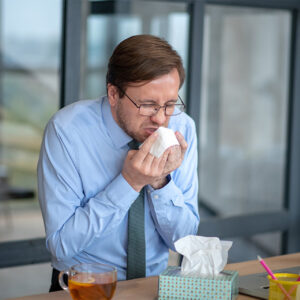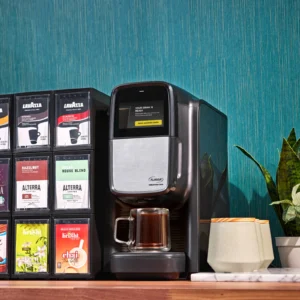The Essential Breakroom Survival Guide
Natural disasters don’t exactly RSVP before showing up. Floods, storms, power outages – they’re the office guests that no one invited, but everyone has to deal with. And while you don’t need to start digging a bunker under the breakroom, office disaster preparedness is about being smart, not scared.
Here’s how to build a practical office disaster kit so your team can handle anything from flooded hallways to blackout mornings – without Googling “how to make a raft out of cubicle walls.”
Flood Protection for the Workplace
Flooding is messy, expensive, and guaranteed to ruin your new office carpet faster than spilled cold brew. That’s where Quick Dam Flood Bags and Flood Barriers come in. Think of them as sandbags without the heavy lifting. Stack them by doors, hallways, or anywhere water likes to sneak in, and they’ll swell into a protective barrier.
These products help prevent costly downtime and show employees you’re serious about safety – no shoveling sand in business casual required.
Emergency Lighting and Power Backups
When the power goes out, panic shouldn’t set in just because your Wi-Fi does. Every workplace should stock:
- Police Security Headlamps and flashlights – reliable, hands-free light sources
- Compucessory Surge Protectors and Heavy-Duty Extension Cords – protect critical equipment
- DieHard Portable Power Stations – keep laptops, phones, and radios running even when the grid is down
Pair your power stations with solar panels to keep charging devices when the outage drags on. It’s the perfect balance of practical and eco-friendly.
Safety Gear Every Office Should Have
Disasters aren’t just about water and power. From debris cleanup to moving equipment in the dark, protective gear makes a difference. Stock your workplace with:
- Utility gloves (like Ergodyne ProFlex)
- High-visibility vests
- Hard hats
- Folding step stools (because sometimes the hazard is just emergency snacks stored too high)
These tools make it safer for employees to help themselves – and each other – in unexpected situations.
Cleaning and Sanitation Supplies
Flood or no flood, you don’t want your disaster prep turning into a biohazard. Always include:
- CloroxPro Disinfectant Cleaner
- Fabuloso All-Purpose Cleaner
- Mops, buckets, and trash bags
- Large bins for cleanup
Because germs don’t take a day off, and neither should your cleaning supplies.
Communication and Visibility
Disasters often mean disrupted cell service or blocked exits. Offices should have:
- Two-way radios to keep staff connected
- Deflecto Emergency Triangles to flag hazards
- Pop-up shelter canopies to create safe gathering zones indoors or outdoors
These small touches help turn chaos into coordination.
Medical and Fire Safety Essentials
Every office emergency kit should also include:
- First aid kits (stocked and up to date)
- Fire extinguishers in visible, accessible areas
- Batteries in multiple sizes
- Air purifiers with HEPA filters for safe indoor air
These basics cover the everyday risks that disasters amplify.
A Perk That Actually Gets Used
Some workplace perks sound good on paper but flop in practice. (Looking at you, foosball table.) Coffee, however, has staying power.
When you’re stocking your disaster supplies, don’t forget morale boosters like coffee, tea, and hot chocolate. Systems like Flavia make it easy with sealed Freshpacks and free machines when you commit to monthly supplies. It’s not just about caffeine – it’s about keeping spirits high when things feel uncertain.
Frequently Asked Questions About Office Disaster Preparedness
At minimum: flood control products, flashlights or headlamps, power backups, first aid kits, fire extinguishers, cleaning supplies, radios, and protective gear. Adding comfort items like coffee or tea can also boost morale.
Flood barriers like Quick Dam products absorb water and expand, creating a barrier that prevents water from entering doors, hallways, and vulnerable areas without requiring sand or heavy lifting.
Portable power stations keep essential devices like phones, laptops, and radios running during outages. This ensures communication, access to digital resources, and continuity of work when the grid fails.
Most experts recommend reviewing office emergency supplies every 6–12 months to check expiration dates, battery levels, and product condition. Replace anything outdated or depleted.
You don’t have to be a doomsday prepper to keep your office safe. A little planning and the right supplies – from Quick Dam Flood Bags to DieHard Portable Power Stations – can transform your workplace from “totally unprepared” to “disaster ready.”
Because when the storm clouds roll in, you want to be the office that calmly says, “Don’t worry, we’ve got this covered,” not the one lighting scented candles and calling it a backup plan.




